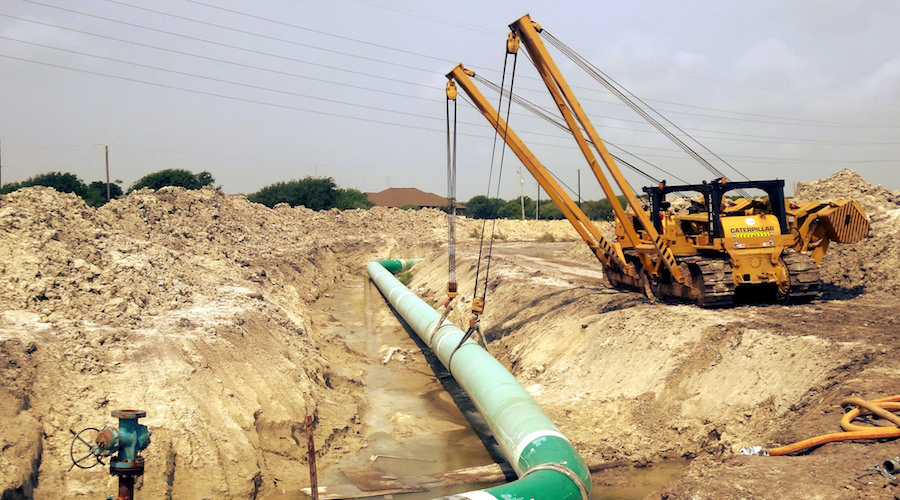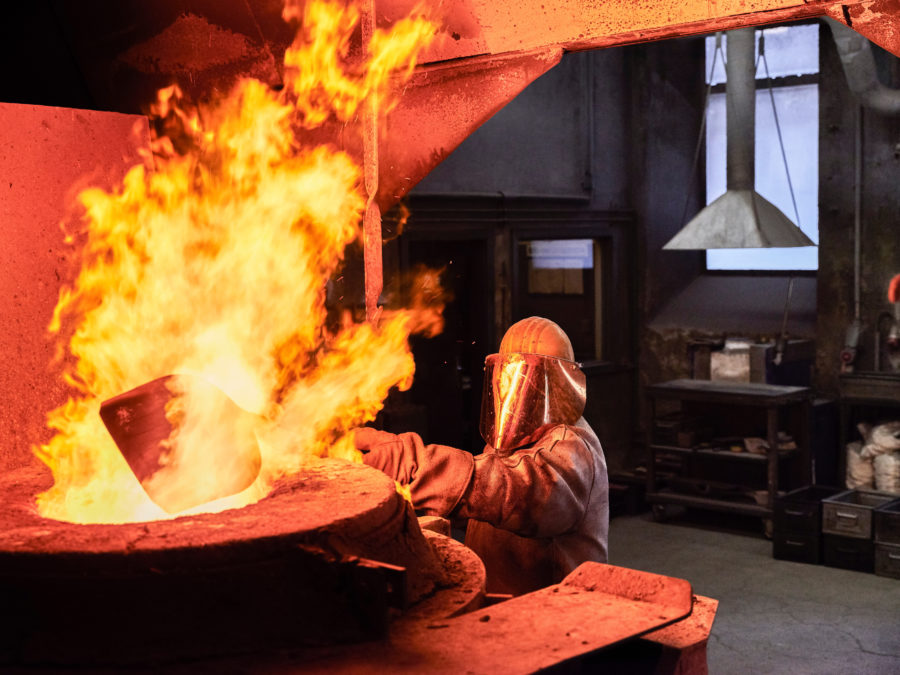A new $470 million pipeline is being built in Alberta that will allow for production of an additional one billion barrels of light oil, but most Canadians have probably never heard of it.
It has received little media attention outside of Alberta and appears to have generated little if any attention or objections from environmental groups.
That’s probably because the pipeline won’t carry oil or natural gas, but liquefied carbon dioxide.
And though it is being built to facilitate enhanced oil recovery, it will sequester so much CO2 – up to 1.8 megatonnes annually – that, at full capacity, it will have the same effect as taking 339,000 cars off the road each year, according to Natural Resources Canada.
The Alberta Carbon Trunk Line, when completed, will be the world’s largest CO2 pipeline. The 240-kilometre pipeline will collect captured CO2 from a fertilizer plant and the new Sturgeon Refinery near Edmonton, and pipe it to mature conventional oilfields near Clive, Alberta.
The Alberta Carbon Trunk Line, when completed, will be the world’s largest CO2 pipeline.
The total project cost is $900 million, of which $470 million is for the pipeline.
It is estimated that the CO2 from the pipeline will allow producers to wring an additional one billion barrels of light oil out of mature, largely depleted reservoirs. It is scheduled to be operating by 2020.
Enhance Energy says up to 14.6 million tonnes of CO2 emissions per year can be sequestered – the equivalent of taking 2.6 million cars off the road – at full capacity.
The Alberta Carbon Trunk Line is one of the latest and biggest Canadian projects in a global carbon-capture market that is forecast to be worth $800 billion by 2030, which may explain why venture capitalists have lately been investing millions into B.C. clean-tech companies like Carbon Engineering and Inventys.
That estimate comes from a new report by CMC Research Institutes and Pembina Institute.
Carbon capture and storage (CCS) is one of three main tools that the Intergovernmental Panel on Climate Change (IPCC) has consistently recommended for cutting greenhouse gas emissions in the energy sector – the other two being renewable energy and nuclear power.

Courtesy of ACTL.
But policy-makers and green lobbyists have focused their efforts almost exclusively on pushing renewables – mainly wind and solar power – while ignoring, if not outright opposing, nuclear power and CCS.
As CMC Research Institutes president Sandra Odendahl puts it, renewables have “kind of sucked the oxygen out of the room in terms of solutions to our little climate problem.”
“Even after this incredibly great growth in renewables – and particularly solar has just absolutely taken off – we still have, I think, something like 5% of all the energy in the world is supplied by solar right now.”
Despite trillions of dollars being spent on renewables and bioenergy, a recent International Energy Agency (IEA) report on global emissions from energy suggests it hasn’t made the kind of dent in emissions that is needed.
Global CO2 emissions hit a record 33.1 billion tonnes in 2018, according to the IEA, as a booming global economy burned more coal, natural gas, gasoline and diesel than ever.
Fossil fuels cannot be wished away overnight, and dealing with their emissions is past the point of urgency.
Solutions offered by the green lobby, and policy-makers who listen to it, have been predicated on the idea that fossil fuels can easily be replaced.
But though the IEA predicts the demand for oil for cars will peak in the mid-2020s, “petrochemicals, trucks, planes and ships still keep overall oil demand on a rising trend.”
The reality is that fossil fuels cannot be wished away overnight, and dealing with their emissions is past the point of urgency.
“If humanity is to keep using fossil fuels, we need to go fast with CCS,” said Mark Jaccard, resource and environmental management professor at Simon Fraser University (SFU). “We are not going fast enough.”
But the only time anyone will hear environmental leaders like Al Gore, Bill McKibben and David Suzuki talking about carbon capture is when they are labelling it “nonsense” (as Gore characterized it), too expensive, or characterizing it as industrial pollution being swept under the carpet.
Chris Bataille, a researcher at SFU’s Canadian Energy and Emissions Data Centre, said decarbonization requires all available tools – not just one – and CCS is one of them.
“We don’t have time to be picky,” he said. “We’re at 414 ppm [parts per million] already, adding two to four per year depending on emissions and the carbon cycles, and things will start getting really dangerous at 450 ppm.”
In some respects, industry may be ahead of government on CCS, partly because there can be a profit in it – in enhanced oil recovery – and also because it’s seen as a way to stay in business in a decarbonizing world.
The oil and gas industry in Canada and the U.S. has been carrying out carbon-capture procedures for years, mostly to produce the CO2 needed for enhanced oil recovery, in which liquefied CO2 is pumped into depleted oil reservoirs to wring out whatever oil is left and, in the process, leaving a lot of CO2 buried underground.
A number of tech companies have also sprung up in Canada that are finding new ways of capturing CO2 and turning it into other usable products, from cement additives to carbon-neutral jet fuel.
Anything that drives innovation in carbon-capture engineering is good, Odendahl said, and right now, industry is doing much of the driving. But she adds that the market for CO2-based products is too small to get the kind of large-scale sequestration that is needed.
“If you really want to make a dent in this, and you can capture the carbon at a reasonable cost,… the best thing you can do with it to address the global cliff that we’re headed for is sequester it in the right geological formation, cap it, monitor it and keep it down there,” she said.
“If you just try to turn this into bioethanol, and stronger concrete and carbon fibres for your car, we’re still going to have a huge problem with the climate. The amount of CO2 that we can sequester is not big enough.”
She said Canada has huge geological sequestration potential. The one thing it doesn’t have yet is a carbon price that is high enough to make sequestration economic, or incentives, like the one just signed in the U.S.
A new U.S. tax code provides incentives worth $30 per tonne to industries that use carbon capture and reuse, and $50 per tonne for carbon capture and sequestration.
Bataille said the carbon price needed to make CCS economic varies greatly, depending on what is producing the CO2.
The most problematic is coal power. It is more costly to capture CO2 from coal combustion, Bataille said, so a carbon price would have to be much higher for coal than for, say, industrial processes.
SaskPower has learned this the hard way. After investing $1.5 billion upgrading a coal power generator and adding a carbon-capture plant at its Boundary Dam coal power plant, the utility found there were design problems. SaskPower still considers the project a success, saying it has captured 2.5 million tonnes of CO2 to date. But it has scrapped plans to add carbon capture to some of its other coal power generating stations, saying that it no longer makes economic sense, given how cheap natural gas has become.
“I would argue that unless we get a CCS breakthrough we don’t currently have, we need to just stop using coal and concentrate on using [natural gas] with amine separation CCS,” Bataille said.




Comments